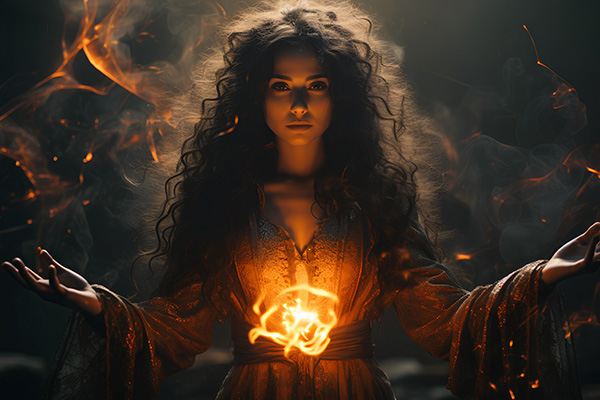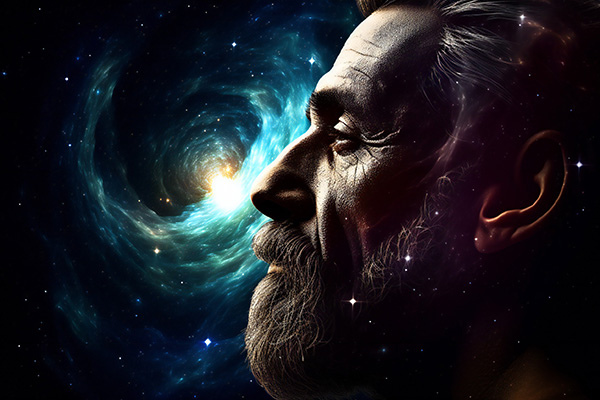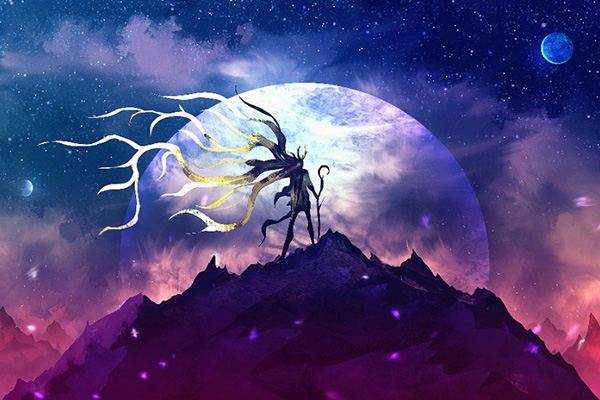soothsayer
Honor Your Pagan Heritage This Halloween
 Samhain holds special significance for those who practiced paganism in a past life, especially those who were involved in magical practices as seers, soothsayers, druids, and witches.
Samhain holds special significance for those who practiced paganism in a past life, especially those who were involved in magical practices as seers, soothsayers, druids, and witches.
For us, this time of year evokes a deep sense of nostalgia, spiritual reorientation, and a return to ancient wisdom as the veil between worlds thins and we reconnect with our ancestors and the spirit realms.
Samhain is an ancient Celtic festival marking the end of the harvest season and the beginning of winter, traditionally celebrated from October 31 to November 1. It is one of the four great Gaelic seasonal festivals, along with Imbolc (February 1), Beltane (May 1), and Lughnasadh (August 1).
In Celtic tradition, Samhain (pronounced “sow-in”) is a liminal time when the boundary between the physical and spiritual worlds is thinner, allowing the spirits of our deceased loved ones, ancestors, and other spirits to cross over more easily.
In ancient times people would light fires and wear costumes to ward off harmful spirits, while also honoring their ancestors with offerings of food and drink.
Samhain is considered the origin of modern Halloween traditions, although Halloween has evolved and incorporated elements from other cultures to become a mostly secular and commercial holiday. For Neopagans and Wiccans, Samhain remains an important festival for honoring the dead, celebrating the cycle of life, death, and rebirth, and connecting more deeply with the spirit realm.
From Ancient Mystics To Modern Psychics
 Psychics and mediums have been around since the dawn of human civilization: from the shamans in indigenous cultures, to the oracles of ancient Greece and Rome, the seers and druids of Celtic societies, the sages of ancient China, and the prophets of ancient Middle Eastern cultures.
Psychics and mediums have been around since the dawn of human civilization: from the shamans in indigenous cultures, to the oracles of ancient Greece and Rome, the seers and druids of Celtic societies, the sages of ancient China, and the prophets of ancient Middle Eastern cultures.
Some famous examples include Pythia, the Oracle of Delphi in ancient Greece; the Celtic soothsayer Myrddin Wyllt, also known as Merlin in later Arthurian legends; the Chinese wu (shaman) Jing Fang; Black Elk, the renowned Native American holy man of the Oglala Lakota Sioux people; Isaiah, the renowned prophet of the ancient Near East; and Agastya, the revered Hindu sage and seer.
Throughout human history, in different cultures and societies, there have always been individuals with mystical abilities who held important roles within their communities and served as intermediaries between the physical world and spiritual realms.
They served as conduits of divine wisdom, predicting future events, providing insight into hidden truths, and offering guidance on various matters. They often acted as special advisors to tribal leaders, rulers, and kings, and typically played an important role in the moral and spiritual direction of their people.
The term “psychic” comes from the Greek word psychikos, meaning “of the soul, spirit, or mind.” In Greek mythology, Psyche was the goddess of the soul. Her name literally means “soul” or “breath.” Over time, the term came to encompass aspects of the mind beyond the ordinary.
The True Value Of The Psychic Pathfinder
 Psychics, mediums, channelers, and prophets have been around as wayshowers or pathfinders since the beginning of time, offering insight, guidance, and predictions to those seeking divine answers to their most pressing questions.
Psychics, mediums, channelers, and prophets have been around as wayshowers or pathfinders since the beginning of time, offering insight, guidance, and predictions to those seeking divine answers to their most pressing questions.
The earliest historical records of people with psychic abilities can be traced back to ancient Egypt, Greece, and China.
One of the most famous psychics of all time was the Oracle of Delphi in ancient Greece. She was a priestess at the Sanctuary of Apollo in Delphi and was known for her ability to channel prophecies. She would enter a trance-like state and utter divine messages and predictions. These prophecies were often sought by kings, generals, and wealthy community leaders seeking guidance or insight.
In ancient Egypt, pharaohs consulted psychic oracles and mediums for advice on matters of state and personal affairs. They also employed soothsayers who practiced various rituals and divination techniques to access divine wisdom and foresight.
In ancient China, divination and psychic practices were deeply embedded in the culture. Oracle bones, inscribed with symbols and used for divination, have been unearthed at ancient sites. Soothsayers, known as fangshi, offered their services to those seeking guidance and insight.
Divination And The Element Of Air
 Various ancient cultures, metaphysical traditions and mystical teachings identify five elements that constitute the world we live in. In Western occult traditions, these elements are typically arranged in the hierarchical order of spirit (aether), fire, air, water, and earth.
Various ancient cultures, metaphysical traditions and mystical teachings identify five elements that constitute the world we live in. In Western occult traditions, these elements are typically arranged in the hierarchical order of spirit (aether), fire, air, water, and earth.
Spirit or aether is the nonphysical element (or ‘fifth element’) that serves as a bridge between the physical and the metaphysical realms. Spirit is the bridge between the body and soul.
Fire is the masculine element representing inner strength, transformative power, courage, protection, purification, and assertive action.
Air is the element associated with creativity, knowledge, learning, mental intention and the universal life force.
Water is the feminine element of emotion, intuition, inner reflection and the subconscious.
Earth represents grounding, stability, fertility, family roots, and the cycles of death and rebirth.
Air is my favorite element in spiritual practice, as is associated with ideas, concepts, inspiration, and innovative thinking. It is also the element of wisdom and divination.
Working with the air element sharpens ideas, enhances experiments, and paves the way for new inventions. Musicians and artists are typically inspired by the element of air. Air is however a fickle element as it can come as a gale-force hurricane, or a calm, soothing breeze…just like our thoughts.
